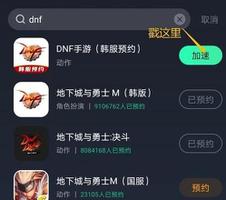如何从@ComponentScan软件包获取接口列表
我想实现类似于Spring Data的东西。
开发人员可以定义一些接口,在接口上添加自定义批注以标记它们(我的代码将为接口创建Proxy实例),然后@Autowire将其用于必要的服务。
在Spring初始化期间,我需要获取所有接口的列表(正确注释)<为接口创建动态代理并将其注入到必要的地方。
创建代理,创建bean注入就可以了。现在的问题是:
它们可以放在任何包装中(甚至放在单独的jar中),并可以使用任何名称。扫描类路径中存在的所有类需要太多时间。
我发现了问题,但它需要基本软件包才能启动。
尝试了基于反射的解决方案,但再次需要基本软件包,或者从根目录启动的情况下,确实需要大量时间来扫描所有可用的类。
Reflections reflections = new Reflections("...");Set<Class<?>> annotated = reflections.getTypesAnnotatedWith(<annotation>);
因此,我需要完整的基本软件包列表以进行Spring扫描,以在软件包中找到我的接口(必须快得多)。
该信息肯定在SpringContext中可用。我尝试调试,看看basePackages
[]是如何初始化的,但是有很多私有类/方法用于初始化,而我只是看不到如何从ApplicationContext正确访问basePackages。
回答:
最简单的答案是遵循spring子项目(引导,数据…)如何实现这种要求。他们通常定义一个自定义的合成批注,以启用该功能并定义一组要扫描的程序包。
例如,给出以下注释:
@Target(ElementType.TYPE)@Retention(RetentionPolicy.RUNTIME)
@Import({MyInterfaceScanRegistrar.class})
public @interface MyInterfaceScan {
String[] value() default {};
}
在哪里value定义要扫描的软件包并@Import启用MyInterfaceScan检测。
然后创建ImportBeanDefinitionRegistrar。此类将能够创建bean定义
由在处理@Configuration类时注册其他bean定义的类型所实现的接口。在bean定义级别(与@Bean方法/实例级别相对)进行操作时很有用,这是必需的或必需的。
public class MyInterfaceScanRegistrar implements ImportBeanDefinitionRegistrar, EnvironmentAware { private Environment environment;
@Override
public void setEnvironment(Environment environment) {
this.environment = environment;
}
@Override
public void registerBeanDefinitions(AnnotationMetadata metadata, BeanDefinitionRegistry registry) {
// Get the MyInterfaceScan annotation attributes
Map<String, Object> annotationAttributes = metadata.getAnnotationAttributes(MyInterfaceScan.class.getCanonicalName());
if (annotationAttributes != null) {
String[] basePackages = (String[]) annotationAttributes.get("value");
if (basePackages.length == 0){
// If value attribute is not set, fallback to the package of the annotated class
basePackages = new String[]{((StandardAnnotationMetadata) metadata).getIntrospectedClass().getPackage().getName()};
}
// using these packages, scan for interface annotated with MyCustomBean
ClassPathScanningCandidateComponentProvider provider = new ClassPathScanningCandidateComponentProvider(false, environment){
// Override isCandidateComponent to only scan for interface
@Override
protected boolean isCandidateComponent(AnnotatedBeanDefinition beanDefinition) {
AnnotationMetadata metadata = beanDefinition.getMetadata();
return metadata.isIndependent() && metadata.isInterface();
}
};
provider.addIncludeFilter(new AnnotationTypeFilter(MyCustomBean.class));
// Scan all packages
for (String basePackage : basePackages) {
for (BeanDefinition beanDefinition : provider.findCandidateComponents(basePackage)) {
// Do the stuff about the bean definition
// For example, redefine it as a bean factory with custom atribute...
// then register it
registry.registerBeanDefinition(generateAName() , beanDefinition);
System.out.println(beanDefinition);
}
}
}
}
}
这是逻辑的核心。可以将Bean定义作为具有属性的Bean工厂进行操作和重新定义,也可以使用从接口生成的类重新定义。
MyCustomBean 是一个简单的注释:
@Target(ElementType.TYPE)@Retention(RetentionPolicy.RUNTIME)
public @interface MyCustomBean {
}
可以注释接口:
@MyCustomBeanpublic interface Class1 {
}
提取软件包定义的代码@ComponentScan将更加复杂。
您应该创建一个BeanDefinitionRegistryPostProcessor并模仿ConfigurationClassPostProcessor:
遍历bean注册表以使用具有
ComponentScan属性的声明类(例如从中提取ConfigurationClassPostProcessor)来定义bean :public void postProcessBeanDefinitionRegistry(BeanDefinitionRegistry registry) {List
configCandidates = new ArrayList (); String[] candidateNames = registry.getBeanDefinitionNames();
for (String beanName : candidateNames) {
if (ConfigurationClassUtils.checkConfigurationClassCandidate(beanDef, this.metadataReaderFactory)) {
// Extract component scan
}
}
}
像Spring一样提取这些属性
Set<AnnotationAttributes> componentScans = AnnotationConfigUtils.attributesForRepeatable(sourceClass.getMetadata(), ComponentScans.class, ComponentScan.class);
然后扫描软件包并像第一个解决方案一样注册Bean定义
以上是 如何从@ComponentScan软件包获取接口列表 的全部内容, 来源链接: utcz.com/qa/398790.html





